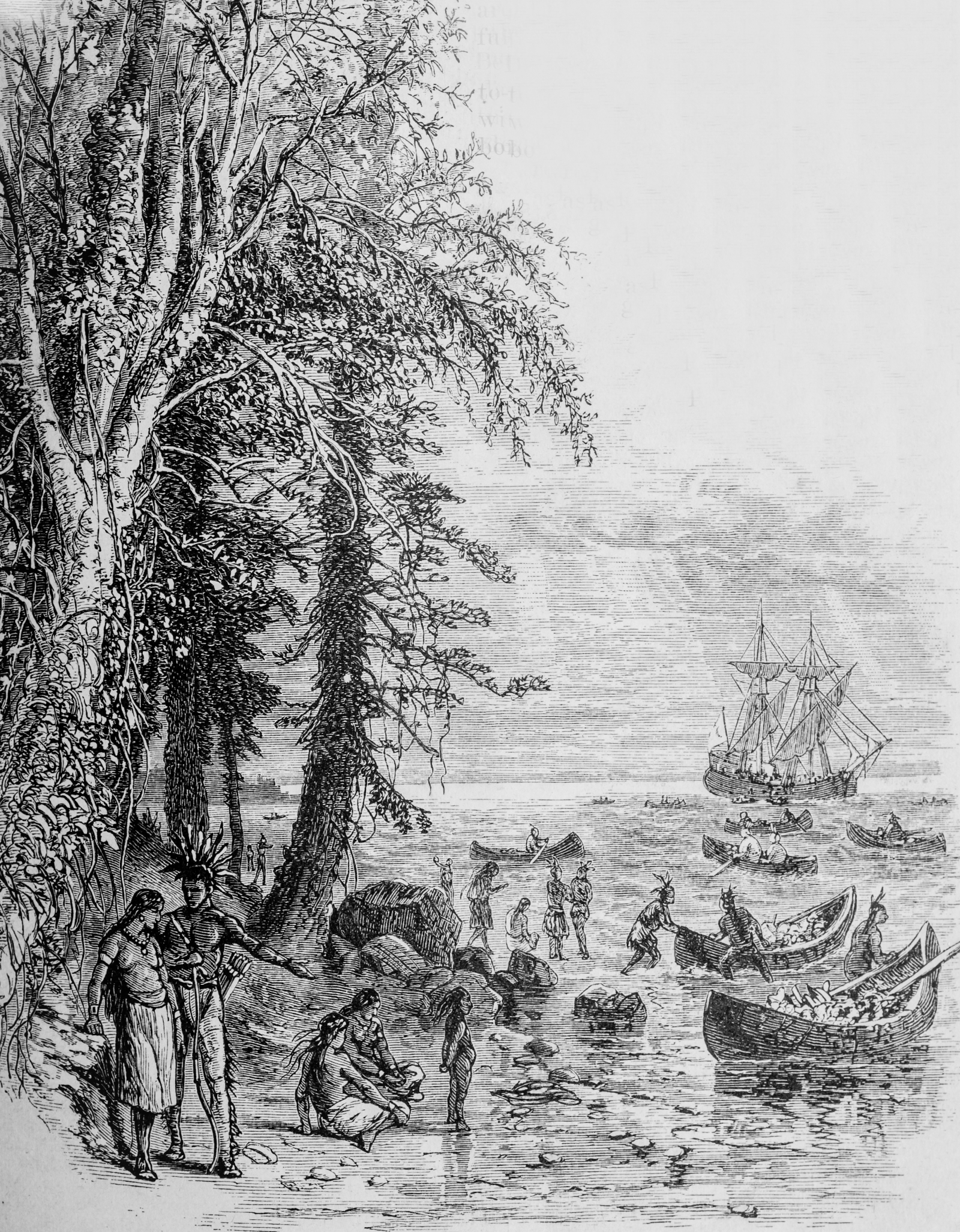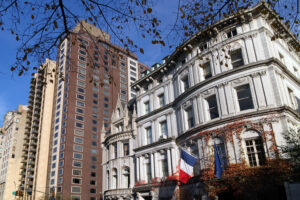
The story of how Manhattan got its name? It goes back a note taken by one of Henry Hudson’s crew members.
Manhattan Island was settled by Native Americans millennia before Italian-born Giovanni da Verrazzano first sailed into the New York Harbor in 1524, revealing the area to Europeans. But what’s the story of how Manhattan got its name? And for that matter, how did Brooklyn get its name? Here’s the story of New York’s five borough names.
How Manhattan Got Its Name
For more than two centuries, New York City consisted only of Manhattan Island. The word “Manhattan” comes from a dialect of the Lenape Native Americans, and can be translated as “a thicket where wood can be found to make bows.” The bow and arrow were a chief means of hunting. The name was first recorded in writing as Manna-hata in the logbook of an officer aboard the Half Moon, the vessel of Henry Hudson, who was the first Dutch explorer to visit the area in 1609.
Hudson’s visit let to the founding of the first Dutch settlement and fort at the tip of Manhattan in 1624. But for the next roughly 50 years, as various conflicts took place, the territory passed back and forth between the Dutch and the English. In 1674, it finally ended up in English possession.
How the Bronx Got Its Name
The Bronx, by most accounts, takes its name from Swedish settler Jonas Bronck, the first European to live in its territory, establishing a settlement in what is now Mott Haven in 1639. Bronck leased land from the Dutch West India Company and purchased more from the local Native Americans. He eventually acquired more than 500 acres, and the Bronx River, which ran through his property, also acquired his name, Bronx being a derivative possessive of “Bronck’s.” Typically “Bronx” is preceded by “The,” though that could be because of the usage “the Bronx River.” However, other locations such as Sudan and Ukraine have also been preceded by a “the,” and it just seems to be a haphazard convention.
How NYC Grew From Manhattan to 5 Boroughs
New York City began adding to its territory in 1874. Prior to that year, all of what is now the Bronx had been part of Westchester County, while maintaining identity as a borough. In 1874, all of the Bronx west of the Bronx River was annexed by Manhattan, or New York County, and Manhattan’s east-west numbered street system was extended into the borough. By 1896, the rest of the Bronx had been annexed by New York County.
New York City was far from done adding territory. By 1897, a referendum was spearheaded by Andrew Haswell Green that called for the creation of Greater New York, in which the counties of Kings, Queens and Richmond would be added to New York City. It passed a vote — overwhelmingly in most locations, narrowly in Kings County — and New York City had acquired its present form by New Year’s Day, 1898.
How Brooklyn Got Its Name
Kings County — established in 1683 when the reigning King Charles II was on the British throne — is today coterminous with Brooklyn, which was named by 1663 for the Dutch city of Breukelen, which is derived from “marshy.” The county consisted of six towns, including the original village of Brooklyn along the East River, which had gained in population and commercial importance enough to become a city in 1834. Over the next few decades, the city of Brooklyn absorbed the towns until Brooklyn, the city, and Kings County were coterminous by 1895, only to join Greater New York in 1898.
How Queens Got Its Name
Queens County is unique in that it is the only New York state county to lose territory upon joining greater New York City. Like Kings County, it was established in 1683, and is thought to be named for Queen Catherine of Braganza, a Portugal native who was married to King Charles II. No documentation, though, has been found to connect her as “the queen of Queens.” Before 1899, Queens County also consisted of what became Nassau County. While the western counties of Queens voted to join Greater New York in 1897, the eastern counties were not included in the referendum, partially as a dispute over the location of the county courthouse, which would have been in Long Island City (the eastern counties preferred Mineola). The split was amicable, with the new Nassau County created in 1899.
How Staten Island Got Its Name
Staten Island wasn’t officially known by that name until 1975; before that, it was the Borough of Richmond. Richmond County has kept its original name. The island itself was named in the 1600s for the Dutch parliament, known as the Staten-Generaal, and was “Staaten Eylandt” to the Dutch. In 1683, after the island landed in British hands, the county was named for Charles II’s illegitimate son, Charles Lennox, First Duke of Richmond. In Britain, Richmondshire is a district in Yorkshire. To this day, main vehicular routes in Staten Island are named Richmond Avenue, Port Richmond Avenue, and Richmond Terrace. The Veterans of Foreign Wars Parkway was originally Richmond Parkway, while Victory Boulevard was formerly Richmond Turnpike.
Kevin Walsh is the webmaster of the award-winning website Forgotten NY, and the author of the books Forgotten New York (HarperCollins, 2006) and also, with the Greater Astoria Historical Society, Forgotten Queens (Arcadia, 2013)
—
Hey, why not like StreetEasy on Facebook and follow @streeteasy on Instagram?











